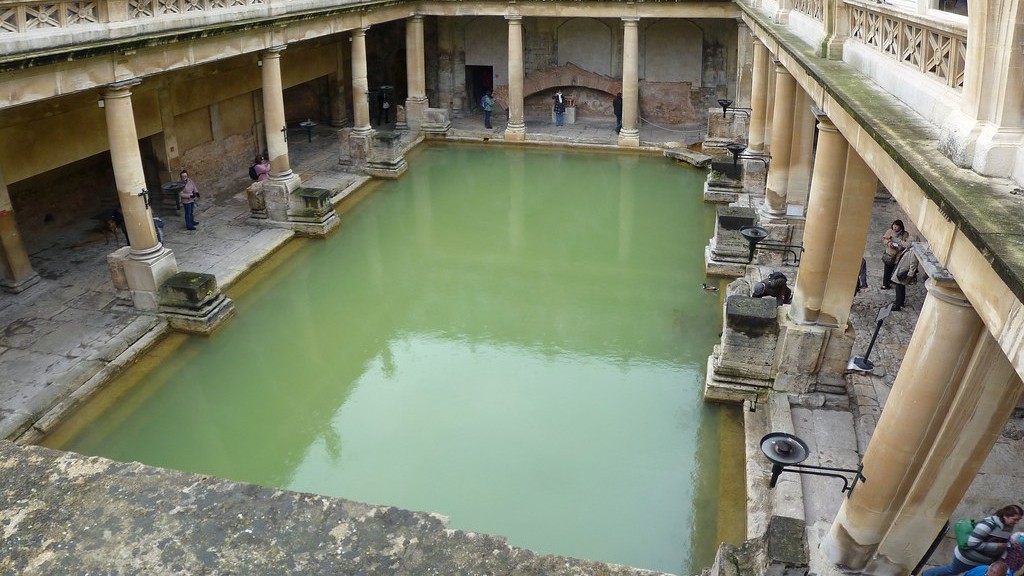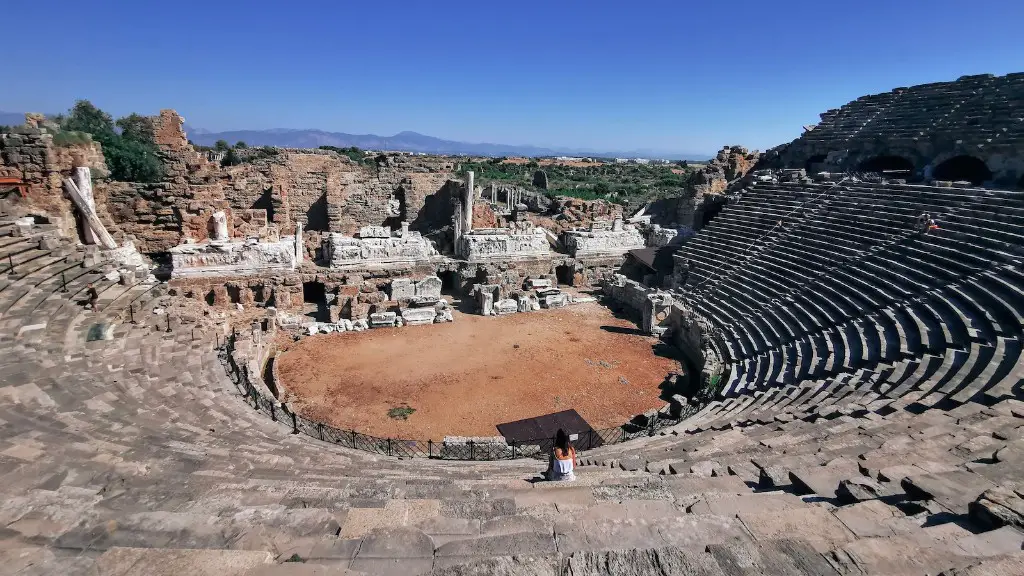Slavery was an ever-present part of life in Ancient Rome for over 600 years, from the early days of the Roman Republic until its fall in the 5th century AD. To many people in the modern world, enslaved lives are seen as distant and detached from our own lives, but for the slaves of Ancient Rome (servi), it was a daily reality. This article explores the realities of life as a slave in Ancient Rome.
The Roman Republic had strict regulations to define what constituted a slave. Any person taken in battle or seized in the course of war could be declared a slave, as could any person born to slaves or sold into slavery by their parents. Slaves had no rights, and were treated as property. They were bought and sold, used for labor, and subjected to their owners’ whims. Over the centuries, the social, economic, and legal aspects of slavery changed and evolved, but the basic status of slaves did not.
Slaves in Ancient Rome typically worked in agriculture, mining, or domestic service. They might be given specialized tasks such as weaving or cooking, or they might be sent to work in dangerous conditions such as the lead mines or salt mines. Roman law protected the rights of slaves, but this protection was not always enforced and some slaves endured very harsh treatment. Slaves were regularly whipped or beaten, and even killed if they disobeyed their owners. While some owners were benevolent and provided their slaves with enough to eat and a place to sleep, many did not.
In Roman society, slaves were at the very bottom of the social ladder. They were denied the right to vote or to own property, and even basic rights such as the right to marry or have children. Freed slaves were considered social outcasts, and it was often difficult for them to find gainful employment. They were also subject to harsh taxes and debts if their previous owners had incurred any. These economic and social pressures made freedom a rather hollow victory for many slaves, who often saw their luck improving only marginally.
As loathsome as the life of a slave was in Ancient Rome, there was an alternative. Since slavery was an economic system, if a slave was able to save up enough money, they could buy their own freedom. This was by no means an easy task, but it was possible. Freed slaves were usually able to find employment and build a new life. Ultimately, the most successful slaves were those who managed to buy their freedom and become independent citizens.
Demographics of Slavery in Ancient Rome
The exact number of slaves in Ancient Rome is unknown, but it is estimated that by the 1st century AD, up to one-third of the population were slaves. Slaves in Rome came from all over the Mediterranean, including Italy, Egypt, Syria, and Greece. The majority were from outside Rome, as Roman citizens were prohibited from becoming slaves. Slaves could also be Greek-speakers (pener), Jewish slaves (Hebraei), or foreign barbarians (barbari).
Slaves in Rome made up a diverse group of people, with different resources, skills, and cultural backgrounds. Although they were considered property, some slaves enjoyed comfortable lives as part of their owner’s family. Slaves often had children, who were legally bound to their parents and were usually taken in by their owners. Still, even those slaves with a comfortable life were never truly free in Roman society.
Slaves’ Rights
The Roman Republic had strict regulations to define what constituted a slave. Slaves could be set free by their owner, or by a magistrate’s order. This was called manumission, a process through which a slave became a freedman and sometimes a Roman citizen. Manumitted slaves were not allowed to serve as soldiers, but they were allowed to own property and some other rights. They were also subject to a five percent emancipation tax if they wished to retain their citizenship.
While Romans were not legally obliged to provide the same rights and protection to slaves as they did to citizens, they were paid wages and were not legally allowed to be abandoned or mistreated. Slaves also had some rights to due process, including the right to appeal their master’s treatment in court.
However, these rights were not always respected. In some cases, owners were allowed to inflict physical punishment on slaves as a form of discipline, and even put them to death if they disobeyed their owners. It was also not unheard of for slaves to be sold, or even forced to work as gladiators for their master’s entertainment.
How Slavery Ended
Slavery in Ancient Rome began to decline during the 3rd century AD, as the Roman economy shifted from a reliance on agricultural labor to other forms of economic production. As the Roman Empire expanded, slaves from conquered nations were brought in as tribute, but this influx of slaves was not enough to make up for the diminishing number of slaves being born into slavery. This trend of diminishing numbers led to slave revolts, increased emancipation of slaves, and eventually, the abolishment of slavery in Rome.
The fall of the Roman Empire and the rise of Christianity in the 5th century AD are thought to have played a major role in the decline of slavery. The Catholic Church disapproved of slave ownership and encouraged the acceptance of freed slaves into their flock. This set in motion a series of events that eventually led to the rapid abolition of slavery in the late 5th century AD.
Legacy of Roman Slavery
The legacy of slavery in Ancient Rome was long-lasting and deeply embedded in Roman society. The institution of slavery was a tool used to oppress those deemed inferior, and to further concentrate power and wealth in the hands of a few. Although slavery had been abolished by the time of the fall of the Roman Empire in 476 AD, its memory endured, and its effects are still felt today. The reminder that slavery was an integral part of the Roman legacy serves to remind us not to take freedom for granted.
Religion and Slavery
Religion also played a role in the lives of slaves in Rome. Slaves enjoyed certain religious rights which were safeguarded by Roman law. Slaves could choose their own religion, and it was illegal to punish slaves for religious reasons. Religion was a tool slaves used to cope with their daily hardships, and it often served to give them hope and meaning in the face of their situation.
Some slaves even gained distinction as religious leaders, such as the freed slave/priest Father Pantaenus, who led the Christian community in Alexandria. Christianity even went so far as to proclaim all people as equal, regardless of their status, in an ingenious way of challenging the oppressive powers of slavery.
The Value of Life and Death
For slaves in Ancient Rome, the value of life was often a difficult one to measure. Slaves were often seen as expendable, and the cruelty of their masters often gave them little to look forward to in life. Nevertheless, for certain slaves, life did have value, even if it was a value only recognized in times of great trial. Life was often seen as a precious gift that should be cherished, but death was a release from the horrors of slavery.
For those slaves who accepted Christianity, death was even seen as an alluring prospect, as it meant ascending to heaven and, ultimately, redemption. This difference in outlook on life and death, between slave and free, provided a crucial contrast in Ancient Roman society.
The Impact on Modern Society
The legacy of Ancient Rome’s slavery still impacts society today. The lessons of the past can be seen in modern slavery, such as in child labor, trafficking, and the exploitation of workers in the global economy. Slavery in Ancient Rome provides a unique insight into the human condition, even in the present day. It is a reminder that oppression and injustice still exist, even in the most advanced societies.
As the world moves towards a more just and equitable society, we must strive to ensure that the legacies of Ancient Rome’s slavery are not forgotten, and that nobody ever experiences the inhumanity of slavery again.
Achievements Despite This Oppression
Despite the harsh and oppressive conditions of their everyday lives, slaves still managed to achieve things that have gone down in history. Some were skilled craftsmen and architects, while others were musicians and scholars. And despite their lack of legal and economic rights, some slaves were even able to become wealthy and powerful in their own right. One such example is the freedman Elagabalus, who ascended to the rank of emperor.
The achievements of slaves in Ancient Rome served as a testament to their indomitable spirit, and we can take inspiration from them in our fight for justice and equality in the present day. Slaves in Ancient Rome, much like slaves in any society, defy the odds and achieve the impossible.
Conclusion
Life as a slave in Ancient Rome was brutal, depraved, and unequal. Slaves were denied basic rights, endured cruel treatment, and were often viewed as expendable. Despite this, some slaves were able to overcome the odds and achieve great things. The legacy of Ancient Rome’s slavery still impacts us to this day, and serves as an important reminder of the threat of oppression and injustice that still exists in the world.





